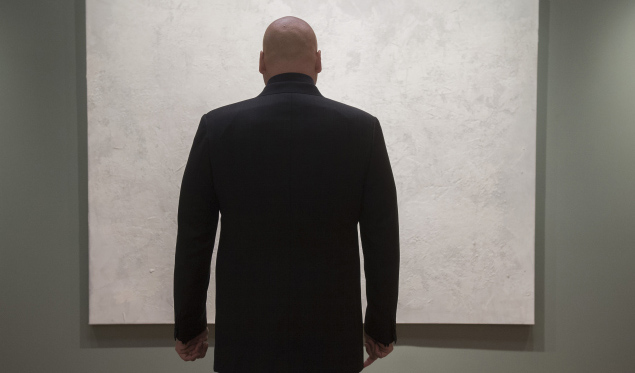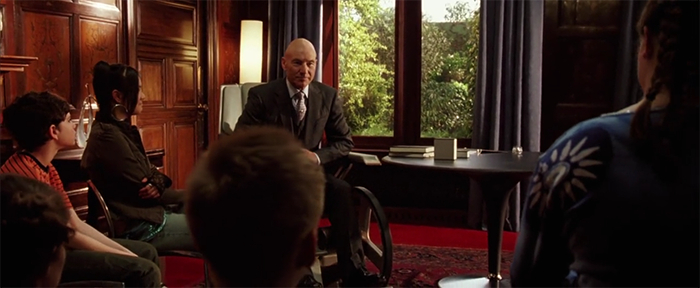Design is a powerful thing.
Can you imagine a time when Twitter didn’t exist? Or Nike? Or Microsoft? Much closer to home, can you picture when there were 42 scattered tribes without a Kenyan flag over them? Yet today, these very real bits and pieces of our lives—whether it’s the Adidas shoe that David Rudisha wears, or the country he runs for—are visually represented in our minds by distinct combinations of shapes and colors. By design.
But design is also a mysterious thing.
What if Twitter hadn’t been named Twitter? What would the logo look like? What if jeans had never been invented? How would casual wear be defined today? What would the Facebook experience feel like in green instead of blue? And without a Like button? It seems as though the most succesful products and iconic brands we know today couldn’t have been fundamentally different from what they currently are! As though what is, had to be! Even the eloquent elegance of the latest Range Rover is expressed in the heavy accent of its predecessors.

The 1970 vs 2013 Range Rover. Form factor remains largely unchanged.
How then can a designer even hope to achieve such definitive yet elusive success when the outcome seems to be the mathematical equivalent of skill times experience times a random number between 1 and 10,000?
The answer, I posit, lies within the paradox of the “design process.”
Why is it a paradox? An apparent contradiction? Because despite having already established that the outcome of a design endeavor is mysterious, we’re now speaking of … a process! Isn’t Henry Ford’s assembly line the quintessential example of a process? Indeed it is. It’s a set of defined steps to achieve a specific result; a guarantee that a car will come out at one end if raw materials go into the other.
But how can “process”, something that sounds so algorithmic, form a compound noun with what seems to be the exact opposite—mysterious creative “design?”
Well, instead of trying to resolve that tension, I’ll give you 7 practical reasons why the design process has been and continues to be crucial to design success, based on my team’s 25+ combined years of experience:
1. It enables useful client involvement
Design is always commissioned by a client, and the perfect scenario is whereby the client and the designer are the same person. That way, the client side of the person knows exactly what he wants, while the designer side knows exactly how to achieve it. More than that, the designer gets real-time feedback on the design and even feels the extent of the client’s happiness with the results.
But more often than not, the client is someone else.
The benefit of that is that the designer will earn an income they wouldn’t otherwise have gained. The challenge though, is in getting inside the client’s heart and head, and then executing accordingly.
A good design process ensures that both time and effort are intentionally expended to understand the client and incorporate their feedback as the product is brought to life.
2. It gets creative juices flowing
The hardest part of designing, is starting! This is sometimes referred to as “blank canvas paralysis”. The weight on a designer’s shoulders to pick a particular direction out of infinite possibilities can have a paralyzing effect. Yet at the same time, having designer’s block at the onset of a project can jeopardize everything.

Photo: Barry Wetcher © 2014 Netflix, Inc
However, if you have a design process, you just have to start because the clock is ticking. And from our experience, the moment you begin designing, ideas start to jump at you from the canvas.
The new challenge quickly becomes one of prioritization rather than motivation.
3. It quantifies creative input
We’re not surprised when some potential clients react with utter disbelief when we quote for a logo, or a website. The question that often goes unasked is, “What the heck is all that money for?!” And it’s a valid question. The price of a car makes sense because of all the materials and engineering that have to go into it. But a logo?! Really? The client could probably have done it themselves, right?
One of the ways to assuage those concerns is to simply describe the design process. For example, if it’s a logo design, the client needs to know: how you do your research; how you translate the essence of their company into metaphors; how you select the best metaphor; why you chose certain shapes over others; how color theory and the psychology of fonts is factored in; how you implemented the logo in such a way that it would be recognizable both as a tiny favicon and as a massive billboard footer; e.t.c
That way, if the client doesn’t end up working with you, they know it’s because of their low budget, not because the payment is incommensurate to the work.
4. It guards against slothfulness
One of the most common challenges in any type of work is the lack of motivation. It therefore goes without saying that in a creative line of work, this is probably the toughest challenge. How are you supposed to come up with a captivating logo when you feel like crap? When you just want to stay indoors and eat junk and let Youtube autoplay all its nonsense?
The remedy for that is simple. Not easy, but simple: Just work!
Stick to the timeline; lack of motivation is no excuse. After all, there is no work on this planet that’s without the promised “thorns and thistles”.
5. It frees and thereby focuses the mind
One of the helpful things I’m grateful to have picked from my mum is the habit of writing down a meal timetable then remixing it a few times a year. This may sound restrictive (coz we all want to try out and eat random stuff, right?) but what I found is that without it, I’d just eat bread all week! Each time I’d try to make something “different”, I’d find that either the total cooking time indicated on the recipes was far too long for my tired self, or I that I just didn’t have the right ingredients to make quick but tasty meals.
However, once I made a schedule, I found that I was generally eating well, and that this allowed me to get creative every once in a while with the ingredients I already had.
All that to illustrate that when you have a design process, you’re not worried about when you’re going to raise an invoice, or when the next deadline is, or whether or not you need to respond to an email immediately. Both you and the client know the process, and that allows you to leave the repetitive management tasks on autopilot while you focus on actually designing.
6. It helps us evaluate ourselves
When I wrote about our A-Team Dilemma, my team and I were feeling quite low because a project had gone south. Things didn’t go as planned, and we felt really bad about the situation. That has taught us many lessons, but that’s only possible because we had a process and a timeline to evaluate ourselves by. If that were not the case, we’d never learn from our mistakes because we’d be making up the rules as we go along.
When we successfully stick to the process, we celebrate. When we fail, we own up and suck it up, we learn, we adjust, and we move on.
7. It can be passed on

Knowledge is vain if it can’t be passed on. (Photo © Marvel)
Finally, and most importantly, is that all those years of defining and refining the design process can then be passed on to the next generation of designers so that they don’t have to repeat the same mistakes that we did. This has become a high priority to us now. I wish we could find a young person who’s passionate about design and who has the mental and design acuity to be Africa’s Jony Ive. I wish I could find someone humble enough to be a protégé.
Time will tell, I guess.
In Conclusion
So from our experience, we have found our design process to be the backbone of the work that we do. It is a paradox, but one that for us has repeatedly maximized that random number between 1 and 10,000. Are you a designer? Or someone who’s worked with one before? What are your thoughts?